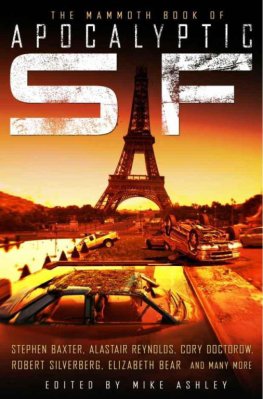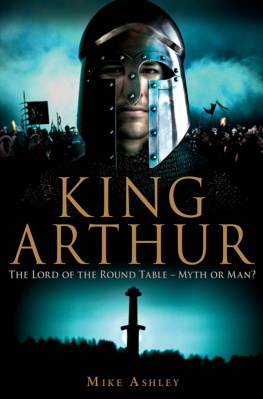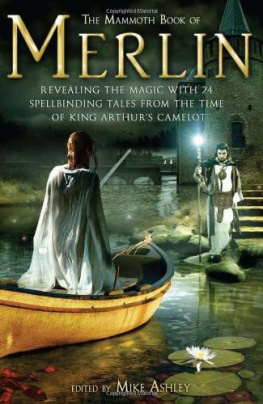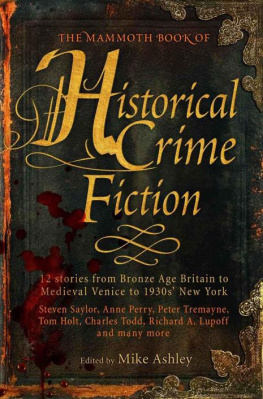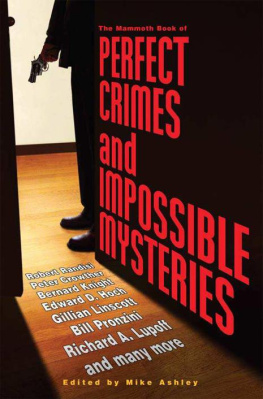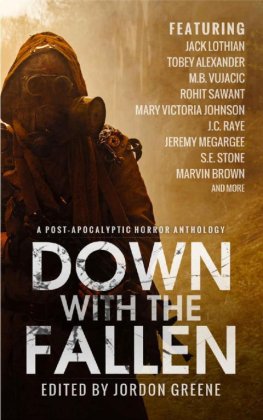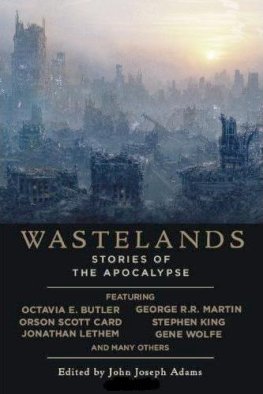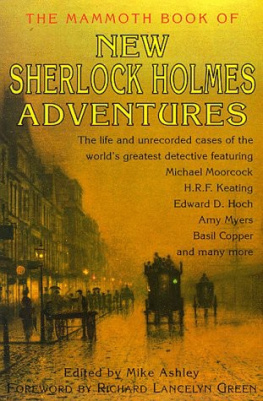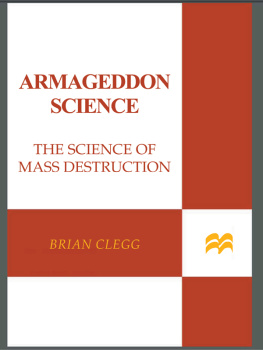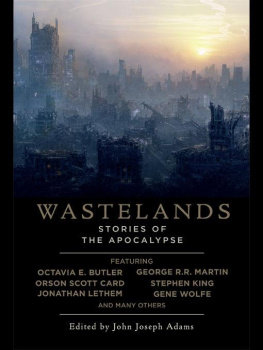THE MAMMOTH BOOK OF
APOCALYPTIC SF
Edited by Mike Ashley
THE END OF ALL THINGS
Mike Ashley
We seem to have a fascination for the Apocalypse, the end of all things. Its not that we welcome it, least I hope not, but it seems that we cant help wondering about it, even predicting it. The End is Nigh, a phrase perhaps too-oft used to have the impact it once had, has now passed into our language to signify yet another fallacious prediction.
There are the obvious religious connotations of the Apocalypse or the Day of Judgment the biblical Armageddon, the Nordic Ragnarok, the Islamic Qiyamah (Doomsday), and so on and this in turn may feed into the growing scientific awareness of our mortality through such possibilities as pandemics, cosmic catastrophes, climate change or the inevitable death of the Sun. The imagery of the Four Horsemen of the Apocalypse, representing Conquest, War, Famine and Death, is as potent today as ever.
This anthology brings together stories that look at many of the ways that the Earth, or life upon it, may be destroyed, from plagues to floods, nuclear war to collision with a comet, alien invasion to new technologies run wild, and a few things beyond your widest imaginings.
Its all here, and more besides. But I didnt want an anthology where every story ended with death and destruction that would become rather depressing over 500 pages so to provide a balance I decided to introduce some hope for the future. At least half the stories take us beyond the end of civilization, even the end of the Earth, and look at how life albeit not as we know it may go on. Science fiction has had its own fascination with the end of all things since at least Le Dernier Homme (The Last Man) written by the French priest Jean-Baptiste Cousin de Grainville at the end of the eighteenth century. He had lived through the French Revolution, which had rather soured his view of the world and drove him into depression and eventual suicide in 1805, leaving this pioneering work in manuscript. It has some remarkably advanced ideas in depicting a world which, through mismanagement and overpopulation, had become ecologically exhausted.
The experience of the Reign of Terror doubtless fuelled de Grainvilles work, and it is not surprising that certain events, such as the end of a century (or millennium) or World Wars, focus minds on a potential Apocalypse. Although a few books followed de Grainvilles including the like-named The Last Man (1826) by Mary Shelley, the author of Frankenstein, which had humanity wiped out by a virulent plague, and Edgar Allan Poes The Conversation of Eiros and Charmion (1839), one of the first stories to have Earth destroyed by a comet the real torrent of books came towards the end of the nineteenth century.
Two novels served as precursors to the main event: After London (1885) by Richard Jefferies, depicted a Britain that has reverted to the Stone Age following an unspecified catastrophe; The Last American (1889) by John Ames Mitchell has a Persian expedition explore the ruins of New York, the United States having been destroyed by social unrest.
The noted French astronomer, Camille Flammarion, wrote one of the first major novels of worldwide disaster, La fin du monde (1894), better known as Omega: The Last Days of the World, where a vast comet not only destroys life on Earth but also on Mars. H.G. Wells almost destroyed all life in The Star (1897) but salvation was at hand thanks to the Moon. Sir Arthur Conan Doyle, best known for creating Sherlock Holmes, combined the ideas of a plague and cosmic disaster in The Poison Belt (1913), where he has the Earth pass through a toxic belt in space. M.P. Shiel had used a similar idea in The Purple Cloud (1901), when a volcano releases a mass of poisonous vapour from deep within the Earth. Wells developed another form of Armageddon when human life is threatened by the arrival of the Martians in The War of the Worlds (1898).
There were the inevitable apocalyptic stories following the First World War. Edward Shanks saw the end of civilization in The People of the Ruins (1920), while in Nordenholts Million (1923) J.J. Connington showed how science might bring civilization back from the brink of an ecological disaster. Interestingly, one of the earliest stories to consider how civilization might crumble through an over-reliance on technology was written as far back as 1909 by E.M. Forster in The Machine Stops.
The Second World War and the detonation of the A-bomb inevitably brought forth many stories of a nuclear holocaust such as The Long Loud Silence (1952) by Wilson Tucker, On the Beach (1957) by Nevil Shute and, perhaps the best known, Dr Strangelove (1963), the Stanley Kubrick film based on the novel Red Alert by Peter George. The Cold War saw a rise in disaster novels generally, particularly in Britain, where The Day of the Triffids (1951) by John Wyndham, The Death of Grass (1956) by John Christopher, White August (1955) by John Boland and The Tide Went Out (1958) by Charles Eric Maine created what veteran British SF author Brian Aldiss later termed the cosy catastrophe. J. G. Ballard established his reputation with a quartet of disaster novels based on the four elements of air, water, fire and earth: The Wind From Nowhere (1961), The Drowned World (1962), The Burning World (1964) and The Crystal World (1966).
The welter of catastrophe novels and films grew exponentially with the approach of the millennium. Life on Earth is all but wiped out by a comet in Lucifers Hammer (1977) by Jerry Pournelle and Larry Niven. We see how isolated survivors cope in a post-holocaust world in The Postman (1985) by David Brin and in The Gate to Womens Country (1988) by Sheri S. Tepper. Sea levels rise in The Road to Corlay (1978) by Richard Cowper and the United States is flooded in Forty Signs of Rain (2004) by Kim Stanley Robinson, while Stephen Baxter drowns the Earth in Flood (2008). Greg Bear has aliens systematically destroying the solar system in The Forge of God (1987). In The Stand (1978), a genuinely apocalyptic novel, Stephen King has most of humanity wiped out by a virulent flu strain, whilst a man-made plague destroys civilization in David Palmers Emergence (1984). Theres a combined nuclear and ecological holocaust in Mother of Storms (1994) by John Barnes, while a major cosmic catastrophe causes climate change in Charles Sheffields Aftermath (1998). Most recently Cormac McCarthys The Road (2006), which won a Pulitzer Prize, presents a very bleak vision of a world all but destroyed by some unexplained catastrophe. Recent TV series such as Survivors, Deepwater Black and Jericho and films such as Deep Impact, the Terminator series and Armageddon continue to stimulate our thoughts and fill our minds with apocalyptic imagery.
All of which goes to show the popularity and enormity of the field and the richness of its history, and created something of a challenge in assembling this anthology. I had considered including many of the classics of the genre but found there was so much new fiction being produced in the last ten years or so that I only had room to squeeze in a couple of older stories, those by Fritz Leiber and Robert Silverberg.
What was so noticeable about the new strain of apocalyptic fiction was how much it showed our fear of new technology, particularly nanotechno-logy. I could have filled this book with stories of nanotechdoom alone but I wanted to get a good spread of catastrophes, both pre- and post-apocalyptic and the inevitable dying Earth. You will find plagues or the threat of plagues in the stories by Robert Reed and Kate Wilhelm; floods in those by Dale Bailey and Linda Nagata; a nuclear holocaust and its aftermath in those by Frederik Pohl and Elizabeth Bear; climate change in the stories by Eric Brown and Paul Di Filippo; cosmic disasters in those by David Barnett, Geoffrey Landis and William Barton, and the threat of technology or how it might save us in the stories by Cory Doctorow, Damien Broderick and F. Gwynplaine Macintyre. Alastair Reynolds brings an entirely new form of apocalypse in his novelette, one of six new stories in this anthology. We travel into the far distant future to see how humanity re-evolves in Jack Williamsons story, and the end of the human race in the stories by Stephen Baxter and Elizabeth Counihan.

